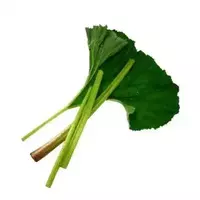Belokopetnik (fuki)

Petasites is a member of the genus of perennial herbs, which belong to the Astrovy family, which unites about 20 species. Often this plant (especially in Asian countries) is called swamp rhubarb or fuki. White experiment (fuki) is common in almost all regions of the Northern Hemisphere, which is characterized by a temperate climate. Moreover, certain species of the plant even reach the subarctic zones.
All species of white experiment (fuca) bloom in early spring even before the basal kidney-shaped or heart-shaped leaves characteristic of this plant appear on elongated petioles (sometimes this happens simultaneously with the spread of leaves). Certain species of squirrel (fuki) are dioecious plants, that is, female and male flowers can be located on different plants.
White experiment (fuki) finds its application in alternative medicine, and also serves as the basis for the manufacture of medicines in scientific medicine. In horticulture, it is customary to cultivate a squirrel as a soil plant. However, for culinary purposes, it is also used: mainly young shoots and delicate leaves of a white experiment (fuki) are suitable for food.
The thick, juicy shoots of the white-eye (fuki) are covered with scaly, film-like leaves beginning to grow in March, and future inflorescences are born at their tops. Before the flowering period begins, these shoots resemble morel mushrooms in their appearance. And then they continue to grow, stretching almost twice more - the maximum height (about a meter) of the shoots of the white experiment (fuki) are observed in the Japanese species.
The peoples inhabiting the regions of the Arctic quite often use for food purposes young peduncles of cold white, which taste like celery, as well as in raw form young leaves. In addition, the rhizomes of the white experiment (fuki) are also eaten fried.
Japanese, a characteristic of Japan, is also used for food - there this plant is cultivated as a vegetable crop. In the spring, young inflorescences of the white experiment (fuki) are collected and boiled or fried in oil, and leaves in canned or boiled form are added to sushi. In addition, on Sakhalin it is also customary to collect petioles of vegetative leaves of this plant and, after special processing, eat.
The healing properties of the white experiment (fuka) are also known - in the form of aqueous infusions of roots and leaves, the plant can be used in diseases of the respiratory tract, especially in coughing, as well as as an anti-thistle agent. For external use, fresh shredded leaves of a white experiment (fuki) are applied to edematous places and wounds, and gouty and rheumatic pains were previously treated with concoctions.
white experiment (fuki) 14 kCal
Energy value of a white experiment (fuki) (Ratio of proteins, fats, carbohydrates - ju):
Proteins: 0.39 g (~ 2 kCal)
Fats: 0.04 g (~ 0 kCal)
Carbohydrates: 3.61 g (~ 14 kCal)
Energy ratio (bj | y): 11% | 3% | 103%
 Español
Español Français
Français Português
Português Русский
Русский 简体中文
简体中文 繁體中文
繁體中文 日本語
日本語 한국어
한국어 العربية
العربية Türkçe
Türkçe Қазақ
Қазақ Deutsch
Deutsch Italiano
Italiano Українська
Українська
